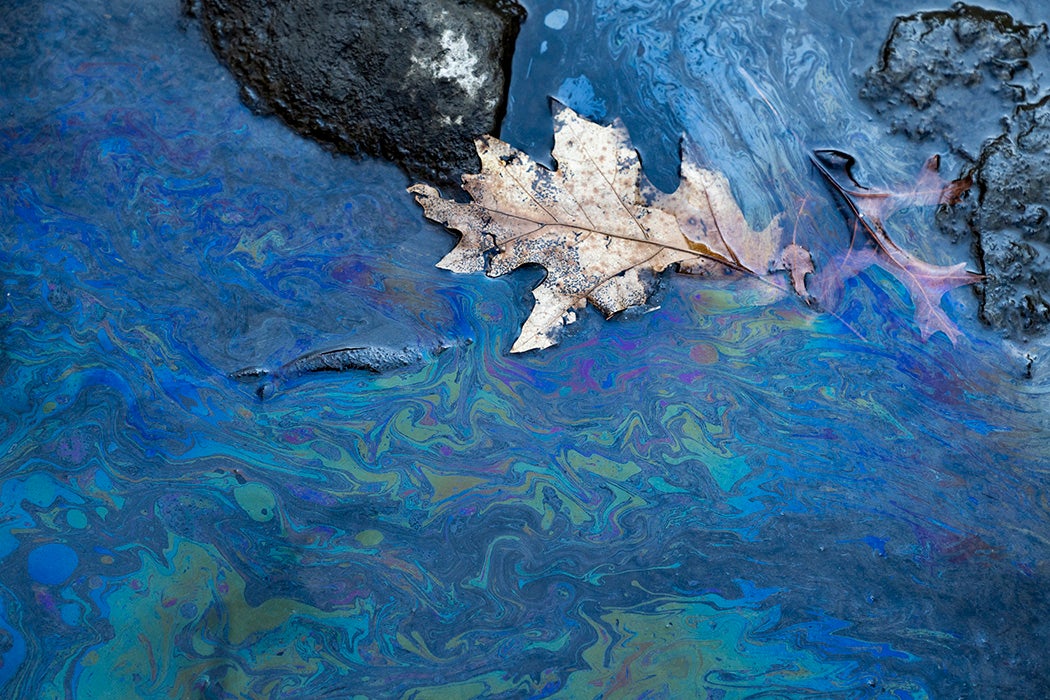Following the February 2023 derailment of a train carrying—among other noxious chemicals—vinyl chloride, some attention is returning to the chemical, which is used only to create the ubiquitous plastic polyvinyl chloride, more commonly known as PVC. Toxicologists, physicians, chemists, and other environmental health scientists have warned of the dangers of vinyl chloride (VC) for almost as long as the chemical has been in mass production—and, as a 2005 study written by Jennifer Beth Sass, Barry Castleman, and David Wallinga and published in Environmental Health Perspectives lays out, chemical manufacturers have been resisting the evidence for even longer.
Vinyl chloride was first introduced to American manufacturing in 1947, and, as the review by Sass et al. reports, as early as 1959 internal industry experiments suggested vinyl chloride’s potent toxicity. Experiments “revealed micropathology in rabbit livers after repeat exposures to 200 ppm [of] VC monomer”—then under half of OSHA’s acceptable exposure limit of 500 parts per million (ppm). Privately, a Dow Chemical toxicologist wrote to a B.F. Goodrich toxicologist that “[w]e felt quite confident…that 500 ppm is going to produce rather appreciable injury” over the course of workweek’s exposure. But, he continued, “I would appreciate it if you would hold it in confidence but use it as you see fit in your own operations.”
Industry professionals held the knowledge “in confidence” for more than a decade, delaying public release of findings of experimental evidence in 1972 of liver angiosarcomas (rare cancers formed in blood vessels) in VC-exposed rodents. “The public learned of the deadly hazard of VC only in early 1974 through newspaper reports of the deaths of three workers in a B.F. Goodrich vinyl plant,” recount Sass et al.—all three workers had liver angiosarcomas. With relative promptness, in April 1975 OSHA lowered acceptable exposure limits to VC from 500 ppm to 1 ppm.
Multiple studies in the 1970s reported cancers developing in non-liver sites as well following VC exposure, including the respiratory system and the brain. A physician at Ethyl Corporation acknowledged internally that “epidemiological work has amply demonstrated an association” between high exposures to VC and increased angiosarcomas in the liver, brain, and lungs. And, after reviewing the mounting evidence, in 1979, the International Agency for Research on Cancer declared, “Vinyl chloride is a human carcinogen,” and “there is no evidence” to suggest any acceptable level of exposure to VC that would not increase risk of cancer. A second IARC review in 1987 came to the same conclusion, adding that recent data showed VC to cause additional cancers, report Sass et al.
Throughout the 1980s and ’90s, the chemical manufacturing industry attempted to overturn these conclusions by sponsoring several studies and reviews of data. This included a 1988 study by British scientist Richard Doll that “downplayed risk of cancer in all sites other than liver.” A court hearing eventually revealed the study was on behalf of the Chemical Manufacturers Association (CMA), for which Doll was recompensed with a donation to the Oxford college where he was founder and first warden. Other studies confirmed the carcinogenicity of VC, though CMA continued to pressure independent scientists to obfuscate the extent of the toxicity of VC, particularly relating to brain cancers.
Weekly Newsletter
As Sass et al. report, CMA’s influence extended into government regulation of VC from the very start. CMA-sponsored scientists held early sway over the models the EPA used to assess VC’s risk for their database of regulated chemicals. The models—largely designed only to estimate VC’s effect on the liver—consequently underrepresented VC’s risk to non-liver organs, and in a 1999 draft, the EPA attempted to implement an uncertainty multiplier to approximate VC’s risk to other organs. But a letter from the CMA called the EPA’s attempted corrective measures “ill-advised” and “can therefore be eliminated.” The EPA’s final report in 2000—and still the official VC reference on the EPA’s website—did away with protective factor.
As the 2023 train derailment, a 2012 train derailment that also released VC, and Sass et al.’s review of decades of independent and industry-sponsored research demonstrate, the dangers of VC throughout the chemical’s lifecycle are tangible and far-ranging. Nor do they appear to be going away anytime soon. Cleanup at East Palestine and surrounding areas is entering month four with no definite endpoint in sight, and the long-term impacts from the 2012 derailment remain unclear but worrying. And, though America’s aging lead infrastructure is gradually being replaced, PVC replacements that might seem like cost-effective, long-lasting alternatives will only extend the chemical’s relevance in the decades to come.







